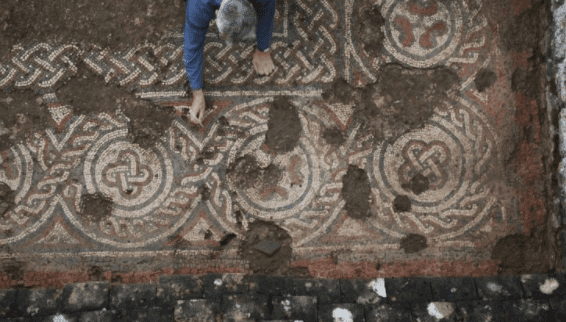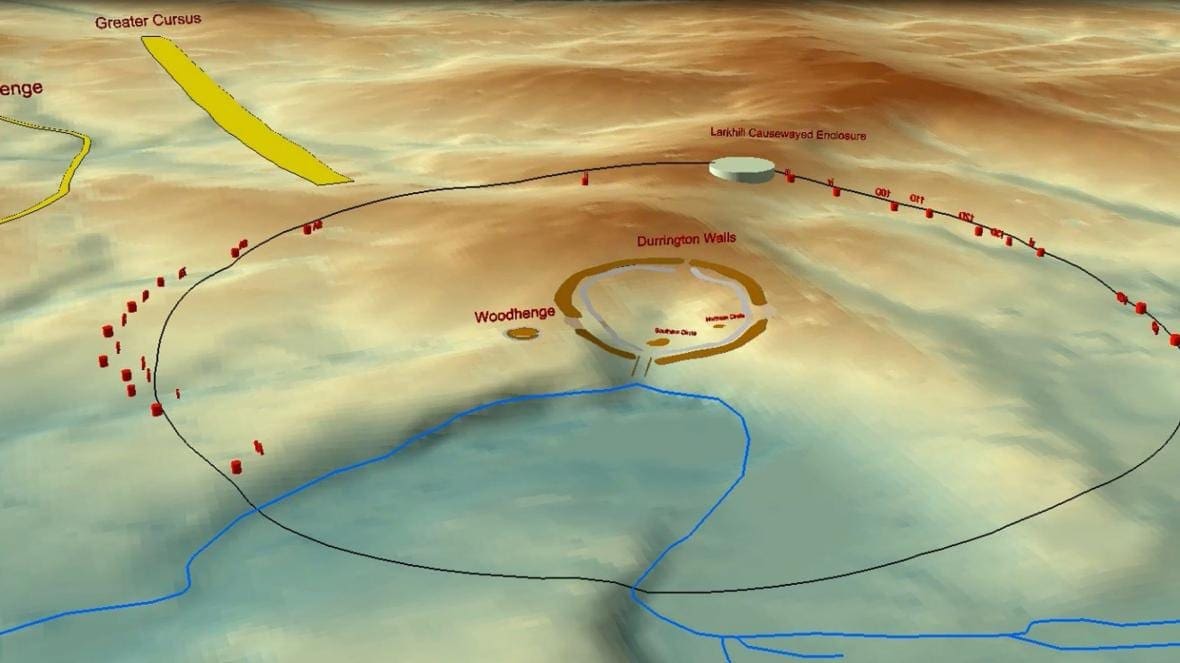
A mosaic at Chedworth Roman villa that was previously believed to date from the fourth century has now been radiocarbon-dated to 100 years later, around 480AD. This suggests, of course, that a sophisticated Roman lifestyle carried on in parts of Britain long after the end of Roman rule. This adds further intrigue into the question of just how quickly the Roman influence disappeared and just how dark the Dark Ages really were.
Archaeologists think they have found evidence of the only known fifth century mosaic in Britain. They said that its creation in a period in which villas were thought to have been largely abandoned was of “enormous significance” for casting light on the Dark Ages.
The surviving sections of the mosaic, which filled the floor of a large room, feature a traditional Roman design including a series of circles in a braided band alternately filled with flowers and knots, shown in the image
Material including charcoal and fragments of bone found in the foundations of a wall that the mosaic was built against were scientifically dated to 424-544AD and the archaeologists said that the mosaic could not predate the wall. They noted that, although very impressive, the mosaic was of poorer quality than late fourth century examples at the villa, with several mistakes in the pattern, suggesting that mosaicists had become less skilled by this time.
This is not the only hint at continuity of Roman culture. For example, the 6th century British monk and polemicist Gildas received a classical education and described British rulers and military leaders with Roman names. These include Ambrosius Aurelianus, the fifth-century leader who was said to have won a great victory against Saxons, who, invited to Britain as mercenaries to fend off Picts and Scots, had turned against their hosts.
The owners of the villa at the time of the mosaic’s construction were likely to have identified as Romans and been steeped in Roman culture. Finds of pottery from the eastern Roman Empire at Chedworth and nearby villas reflect their occupants’ continued purchases of imported Mediterranean goods, he added. Excavations suggested that Chedworth’s later fifth century occupants lived in parts of the Roman house, which was one of the largest in Britannia, but also used some former living spaces for storage.
It is interesting to speculate why Chedworth Villa’s owners were still living in this style well into the 5th century. It seems that in the West Country the Romanised way of life was sustained for a while. Many large, richly decorated Roman villas have been found in the countryside around Cirencester, which is around eight miles from Chedworth.
By the end of the fourth century, Cirencester was the second largest Romano-British town after London and had become the capital of a separate province, Britannia Prima. The wealth of these many lavish villas surrounding this provincial capital surpassed that of any group found across the rest of Britain. Perhaps this territory occupied a more protected area, sheltered from the hostile raids taking place from the north and along the western and eastern coasts.







